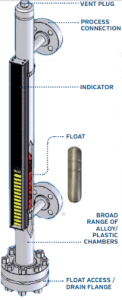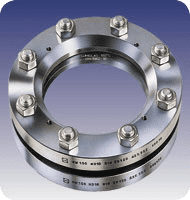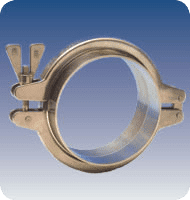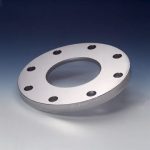LED lighting for food & beverage sight glass applications
Posted on August 30, 2016 by LJ Star[vc_row][vc_column][vc_column_text]Food and Beverage ApplicationExperts in the $738 billion food and beverage manufacturing industry know that, for consumers, taste begins with the eyes. This is especially true with beverages, for whom hue, clarity, cloudiness, transparency, opacity and foam are very tightly controlled. Such the domain of the processing engineer, who depends on the sight glass and associated lighting to observe the process media.
It’s surprisingly dark in there. Without adequate illumination of the vessel interior, the sight glass is of little use to an operator peering in and trying to tell if a batch of barbecue sauce is contaminated with the previous batch of hot sauce.
In the past, light selection was almost an afterthought. The typical luminaires used halogen bulbs that were limited by size and heat. Now that LED lighting is available, the system designer must consider a number of lighting options.
First among them is determining how many lumens are enough. In the food and beverage industry, cost is always a weighted factor in engineering decisions, so you don’t want to pay for more light than you need. LED luminaires offer a wider range of brightness, including super-bright lights that can illuminate large tanks like never before. See my previous blog post for specific guidance on how to size LED lighting for your specific application.
Reliability is another concern, and it is related to cost as well. LEDs last up to 50 times longer than traditional halogens, reducing labor costs and assuring reliable illumination when you need it. A halogen light might cost less at the initial purchase, but over time an LED light is usually the better bet. Vibration must be considered as well. Unlike halogen lights, LED lights don’t have filaments, which is an obvious advantage if there is vibration such as on mixers and vessels with pumps. Nevertheless, LED luminaires are made using printed circuit boards and electronic components that are not immune to vibration. For high vibration applications, select a fiber optic luminaire that allows you to mount the light engine at a distance away from the vibration.
Halogens are hot, and they emit infrared light that can transfer heat to a process. This may be important for refrigerated processes. LEDs get hot too, but the light they emit is essentially cool.
Speaking of cool, LED lights can be color tuned for specific applications. L.J. Star commissioned a study that determined that LEDs with cool-white (around 5000 to 10,000 Kelvin) color temperature are the best choice for stainless steel vessels, which tend to reflect light at the blue end of the spectrum. See our white paper on keeping your lighting cool. https://www2.ljstar.com/l/12112/2016-08-30/353wmp
Washdown compatibility is readily available, for both halogen and LED luminaires. However some models feature a true crevice free design, even on the switch, for optimal hygiene. Another consideration is how the light is mounted. I have to digress here for a moment, but I promise to come back to the lights.
Sight glasses for beverage and food applications are often held in place by a threaded retainer. The assembly and threads may potentially provide a harbor for bacteria, the thought of which should send chills up your spine. Another type of sight glass used in food and beverage applications is made of plastic or glass fused to a stainless steel ring. This kind of sight glass (also called a sight window) can be installed using a sanitary clamp connection, which offers superior hygiene.
What does this have to do with sight glass lights? Only that some models are made to mount over a sight window via a sanitary clamp, making a tight, neat seal. The other option is an externally mounted bracket. While that’s on the outside of the tank, it is definitely not crevice free and could, depending on the location of the sight glass, provide a spot for water to collect on top of the window after washdown.
I hope this post has been helpful.[/vc_column_text][/vc_column][/vc_row]
Subscribe to our Blog
Categories
- Certifications
- Company
- In The News
- Industry Information
- METAGLAS® Sight Glasses
- PackExpo 2020
- Sanitary Clamps
- Sanitary Fittings
- Sight Flow Indicator Benefits
- Sight Glass Applications
- Sight Glass Construction
- Sight Glass Lighting
- Sight Glass Lights
- Sight Glass Process Vessel Camera
- Sight Glasses
- Trade Shows
- Webcast



